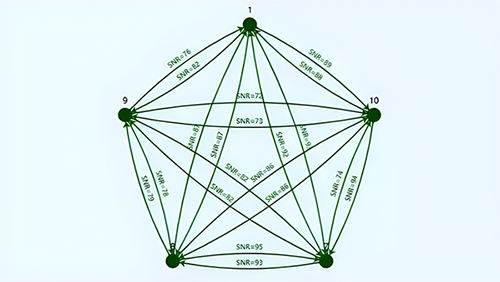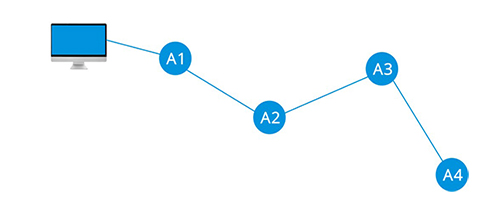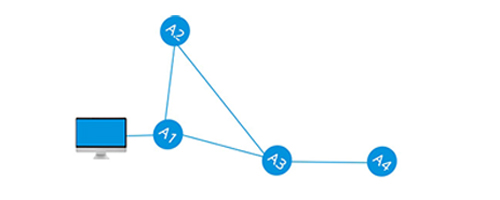1. What is a MESH network?
Wireless Mesh Network is a multi-node, centerless, self-organizing wireless multi-hop communication network (Note: At present, some manufacturers and application markets have introduced wired Mesh and hybrid interconnection: the concept of wired + wireless, but we mainly discuss traditional wireless communication here. Tactical sdr tranciever manet, because in many special application scenarios, it does not have the wiring conditions or it is very difficult and inconvenient to use). Any wireless mobile radio node in the network can send and receive signals as a router. And it can dynamically maintain connection and communication with other single or multiple mesh node in any way. Tactical mimo radio mesh can communicate with other networks to solve communication problems in areas that cannot be covered by wired networks.

2. Network Topology
The topology of the Mesh network is not fixed, and it changes adaptively according to the channel quality between Multicast Wireless Mesh Network Node. As shown in the following pictures, the network topology changes when 4 nodes are networked.
●Chain Topology

Each mesh node is distributed in a chain, and only two adjacent nodes can communicate directly. Nodes 2, 3, and 4 back haul video and data to node 1, but node 4 needs nodes 3 and 2 as relays, and node 3 needs node 2 as a relay.

All the nodes are connected into a network in a star manner. There is a master node in the network, and other slave nodes are directly connected to the master node. Nodes 2, 3, and 4 directly back haul video and data to master node 1.
●MESH Topology

Connecting multiple types of wireless communication network systems by multiple COFDM MESH nodes allows the network to choose the fastest path to transmit video and data. Nodes 2, 3, and 4 back haul video and data to node 1. But node 4 needs node 3 as a relay. Nodes 2 and 3 directly send back to node 1.
3.Features of Mesh Networking
1) Only the Ethernet mimo Netnode IP Mesh Radio is required for building a wireless communication network system.
2) Any MANET Mesh Radio can join in or leave the MESH network any time
3) Flexible networking without a center node
4) No or little configuration required
5) Support mutual communication between any IP MESH Node
6) Support multiple relays
4.Advantages of Mesh Networking
Rapid Deployment: Easy to install. Plug and play.
NLOS: Line-of-sight free video network technology node can forward signals to non-line-of-sight nodes.
Stability: If any node fails or is disturbed, the data packet will be automatically and seamlessly routed to a better path to continue transmission. And it will not be dropped when crossing routes, and the operation of the entire network will not be affected.
Flexible: each device has multiple transmission paths available. The network can dynamically allocate communication routes according to the communication load of each node, thus effectively avoiding communication congestion of nodes.
Self-synchronization: When the wireless configuration information of the main router is modified, the sub-router will automatically synchronize the parameter configuration (after the new node is connected, it can be automatically synchronized without setting)
High bandwidth: the number of nodes is large. When data is transmitted over multiple short hops, there is less interference and less data loss, and mesh system transfer rate is large
is large.
5.Disadvantages of Mesh Networking And Solutions
The main limitations of traditional Mesh network are node quantity limitation and forwarding delay, so the traditional Mesh network is not suitable for very large network sites and network scenarios with high real-time requirements. In order to overcome this shortcoming, based on 4G and 5G experience, IWAVE realized fully self-developed wireless baseband and scheduling protocols and developed fully customized wireless broadband Mesh AD hoc networking products.
IWAVE's MESH products have the advantages of low delay, long distance, large bandwidth, and secondary development.
It also gradually achieves a breakthrough from 32 nodes to 64 nodes, which solves the problem of large delay, poor picture quality and short distance in the current wireless video transmission and the problem of insufficient 4G/5G public network coverage. In the future, IWAVE will continue to break through the number of nodes and reduce the delay time, providing a more flexible, efficient and convenient Mesh networking solution for uav gcs communication, ship to ship communication, uav to uav communication and uav swarm networking.
Post time: Aug-22-2023






